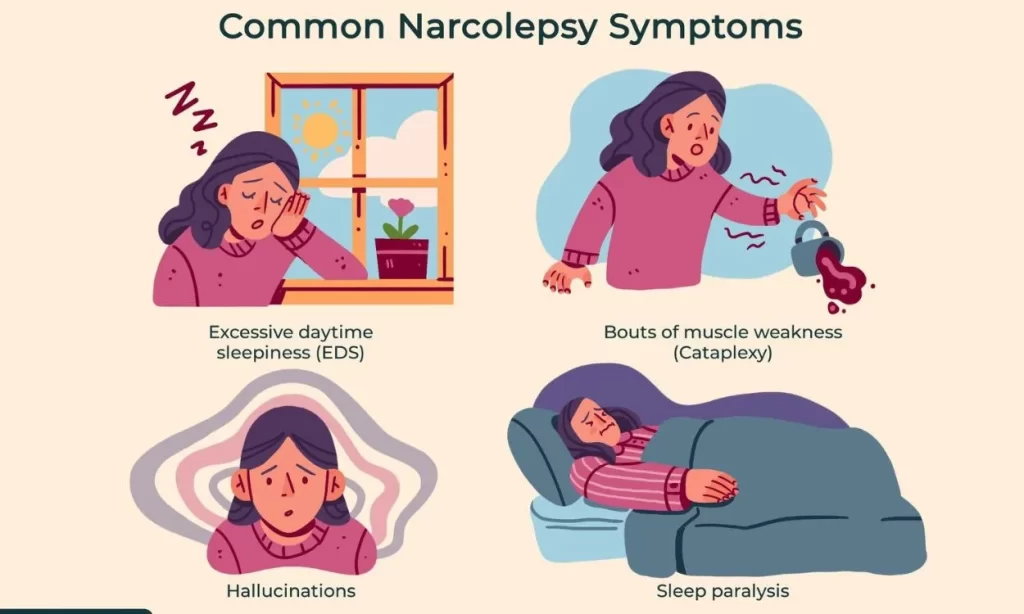
What is Narcolepsy?
Narcolepsy is a chronic neurological disorder characterized by excessive daytime sleepiness (EDS), sudden sleep attacks, and other sleep-related symptoms. It affects the brain’s ability to regulate sleep-wake cycles.
Symptoms:
- Excessive Daytime Sleepiness (EDS): Uncontrollable sleepiness, even after sufficient sleep.
- Cataplexy: Sudden muscle weakness or paralysis, often triggered by emotions.
- Sleep Paralysis: Temporary inability to move or speak when falling asleep or waking.
- Hypnagogic Hallucinations: Vivid, dream-like experiences when falling asleep or waking.
- Sleep Attacks: Sudden, uncontrollable sleep episodes.
- Disrupted Nighttime Sleep: Poor sleep quality, insomnia, or frequent awakenings.
- Automatic Behavior: Performing tasks without conscious awareness.
Types:
- Type 1 Narcolepsy (with cataplexy)
- Type 2 Narcolepsy (without cataplexy)
Causes and Risk Factors:
- Genetic predisposition
- Brain chemistry imbalance (hypocretin/orexin)
- Autoimmune disorders
- Traumatic brain injury
- Infections (e.g., strep throat)
- Family history
Diagnosis:
- Clinical evaluation
- Sleep diary or actigraphy
- Polysomnography (PSG)
- Multiple Sleep Latency Test (MSLT)
- Genetic testing (HLA typing)
- Diagnostic criteria (DSM-5 or ICSD-3)
Treatment Options:
- Medications:
– Stimulants (e.g., Ritalin)
– Sodium oxybate (Xyrem)
– Selective serotonin reuptake inhibitors (SSRIs) - Behavioral Therapies:
– Cognitive behavioral therapy (CBT)
– Sleep hygiene practices
– Lifestyle modifications - Lifestyle Changes:
– Regular exercise
– Scheduled naps
– Avoiding heavy meals and caffeine
Managing Narcolepsy:
- Establish a consistent sleep schedule
- Take regular naps
- Engage in physical activity
- Avoid stimulating activities before bedtime
- Join a support group
- Educate family, friends, and employers about narcolepsy
